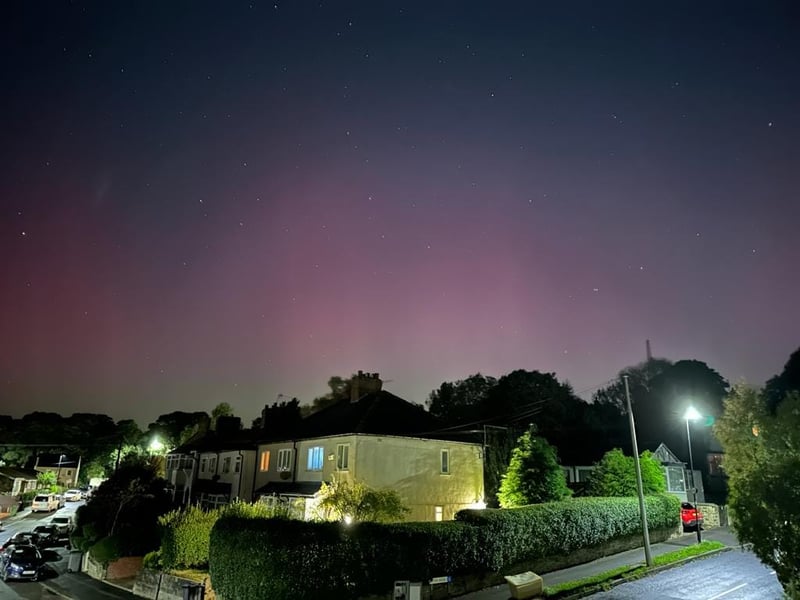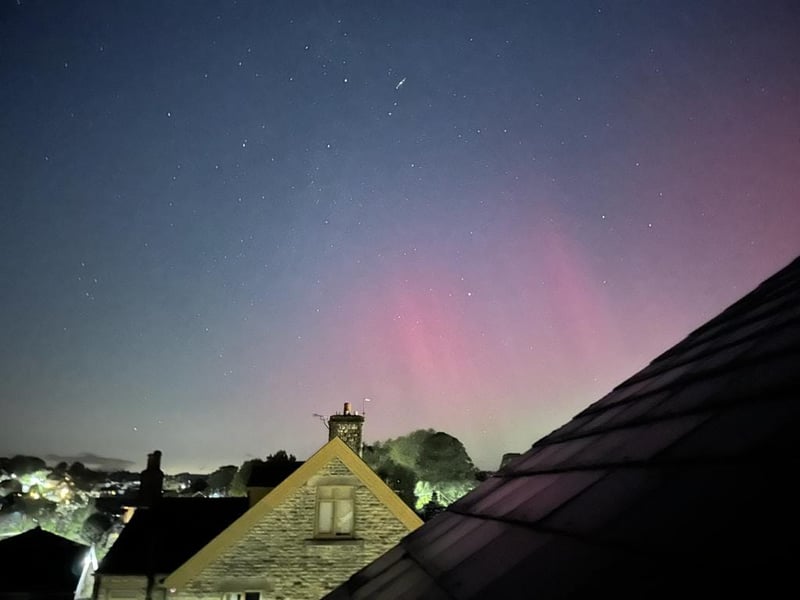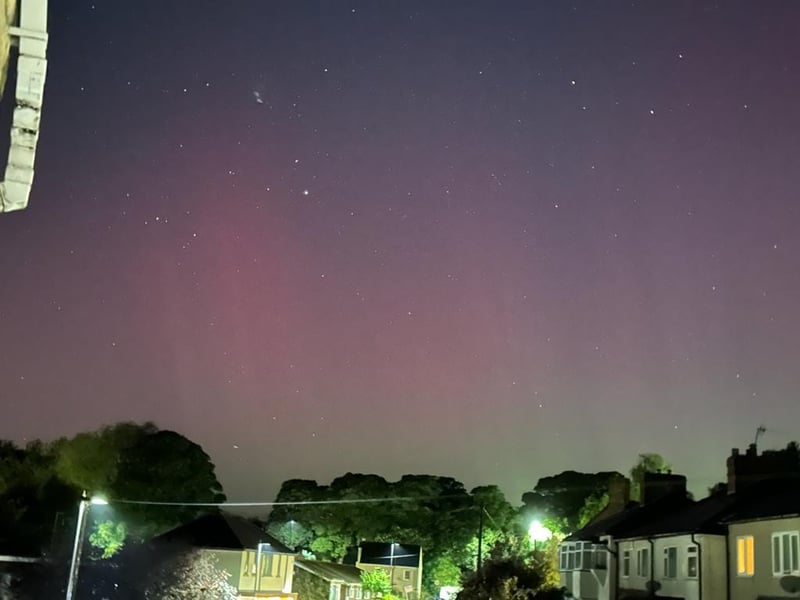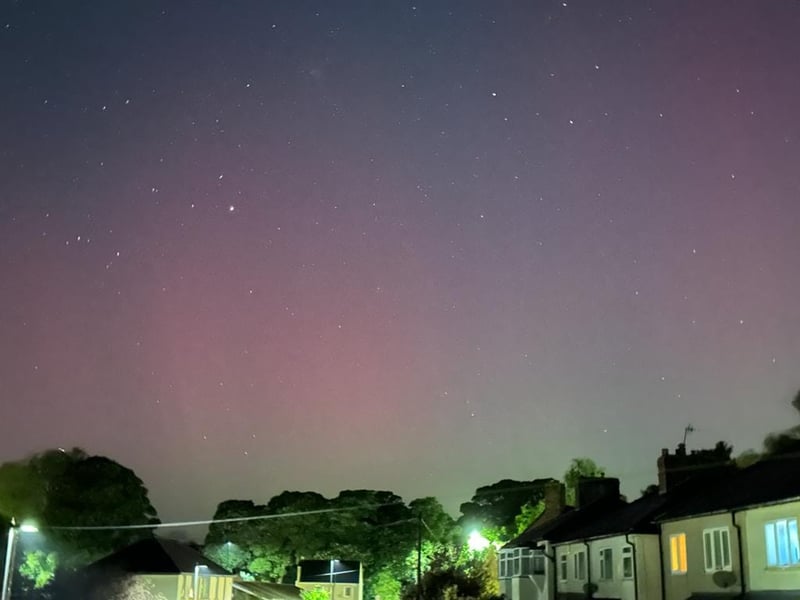These incredible photos show the northern lights blazing above Sheffield this week.
The astonishing images of the aurora borealis light display were captured by Sunita Rajani in the skies above Crosspool during the early hours of Monday, September 25.
She told how she stayed up until 3am that morning to get the shots, which she took using the night mode on her iPhone, with a 10-second exposure. She said: "The sky had a pink glow but the pillars were seen on camera."
It is rare that the aurora borealis is so visible as far south as Sheffield, especially from a relatively built-up area of the city, with people often travelling to Scandinavia or Iceland specially to see them. But Sunita said the timing and the conditions were perfect that night.
"It was the autumn equinox on 23/9 when there is a burst in activity. The activity peaked at 2.30am on the following Monday morning with a massive burst at 3am," she said.
"You have to look towards the northern horizon in dark skies. It's generally not seen as well in the middle of the city or where we are but it was a massive geomagnetic storm causing this.
"I have photographed it previously too from S10 but not as good as this. I would say was a historic night for Sheffield."
The good news for people hoping to see and photograph the northern lights from Sheffield, there could be an even better chance next year.
The sun is reportedly set to reach the peak of its 11-year cycle at the end of 2024 or early 2025.
The aurora borealis is caused by activity on the surface of the sun. When solar storms produce huge clouds of electrically charged particles, some of those particles travel millions of miles and eventually collide with the Earth.
Some then become captured in the Earth's magnetic field, which accelerates towards the north and south poles and into the atmosphere.
Those particles slam into atoms and molecules in the Earth's atmosphere, heating them up, with Royal Observatory astronomer Tom Kerss saying the process is 'very much like heating a gas and making it glow'.
The curtains of light are caused by the lines of force in the Earth's magnetic field, with the colours being created as different gases are heated.
The green we see in the aurora is characteristic of oxygen, while hints of purple, blue or pink are caused by nitrogen.
"We sometimes see a wonderful scarlet red colour, and this is caused by very high altitude oxygen interacting with solar particles,” explains Kerss. “This only occurs when the aurora is particularly energetic."
If you want to know the best night to see the northern lights from where you live, Lancaster University's Department of Physics has a handy website called AuroraWatch UK, which estimates the likelihood of an aurora being visible based on geomagnetic activity.
There is even an app available to download which sends an amber or red alert when the chances of seeing the aurora borealis are highest.
As Sunita mentioned, finding a darker location where there is less light pollution helps, and of course the sky needs to be clear, with no clouds to obscure the lights.

1. Northern lights
Sunita Rajani captured these photos of the aurora borealis from Crosspool, Sheffield, using her iPhone

2. Amazing colours
Sunita Rajani captured these photos of the aurora borealis from Crosspool, Sheffield, using her iPhone

3. Rare opportunity
Sunita Rajani captured these photos of the aurora borealis from Crosspool, Sheffield, using her iPhone. She said it was rare to see them so clearly from the city

4. Advice
Sunita Rajani captured these photos of the aurora borealis from Crosspool, Sheffield, using her iPhone. She has offered advice to other people hoping to see and photograph the phenomenon